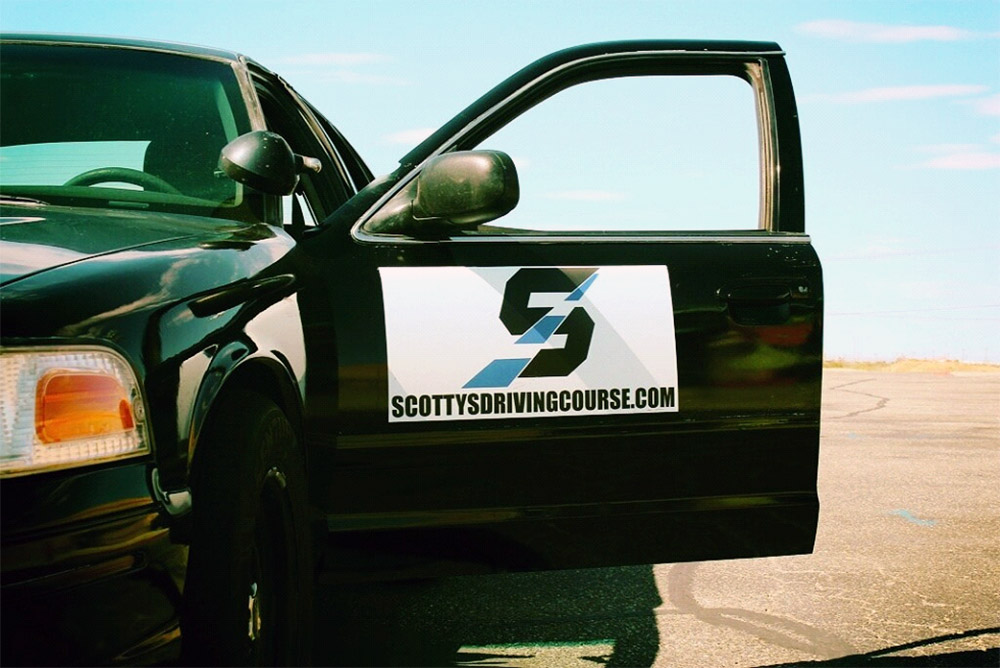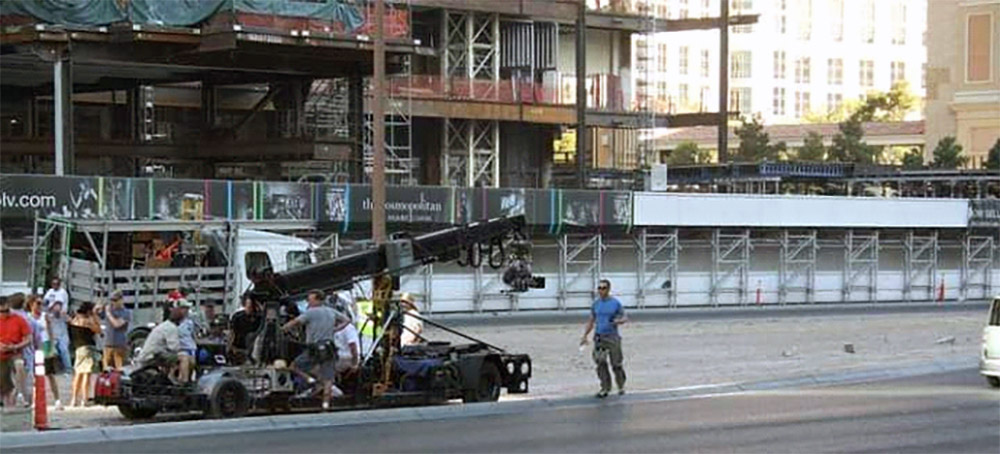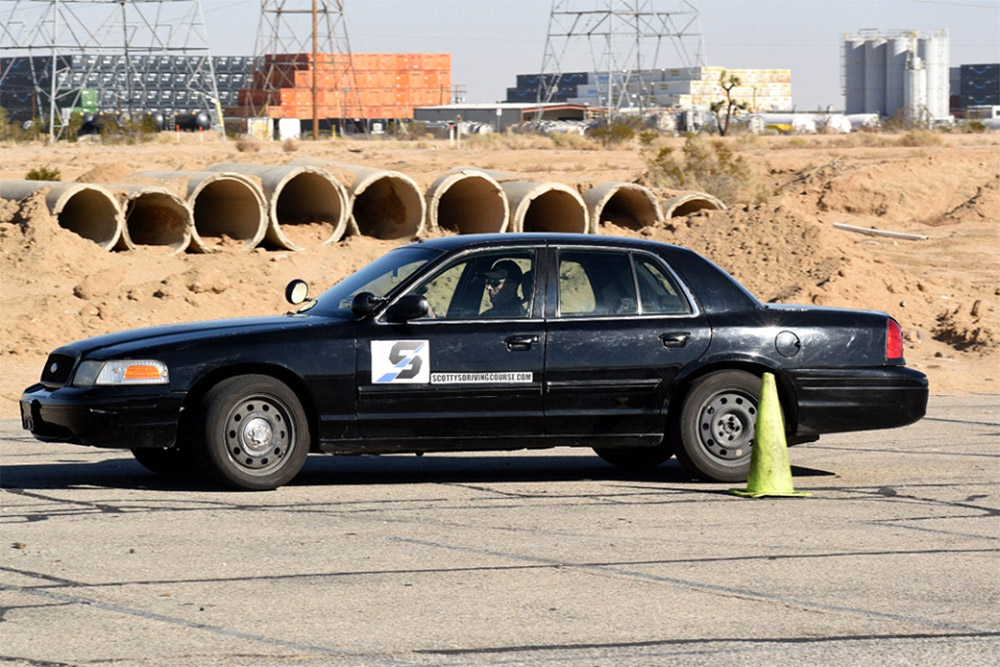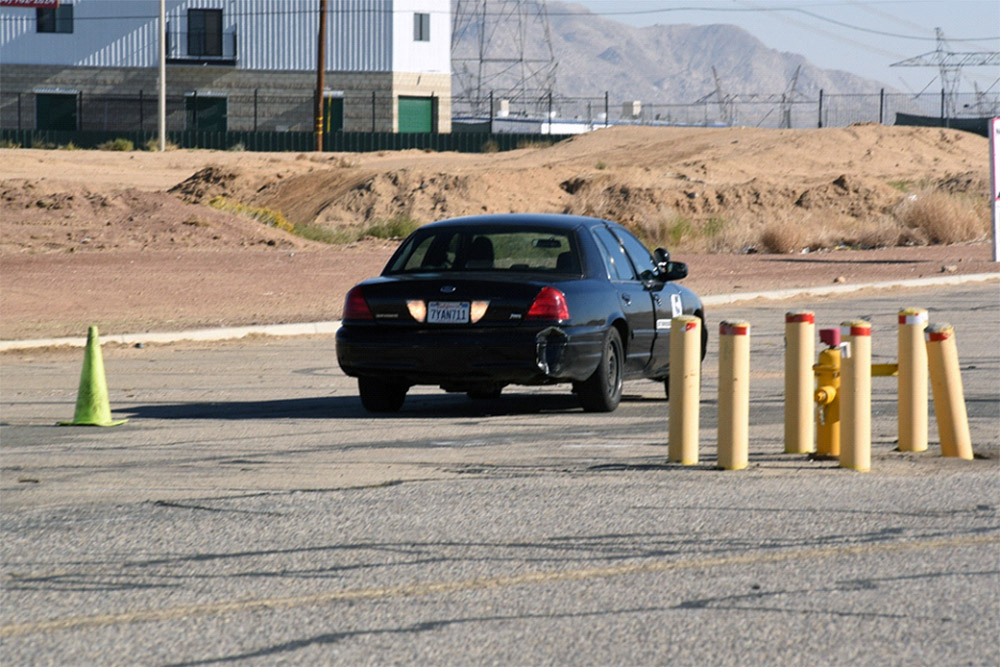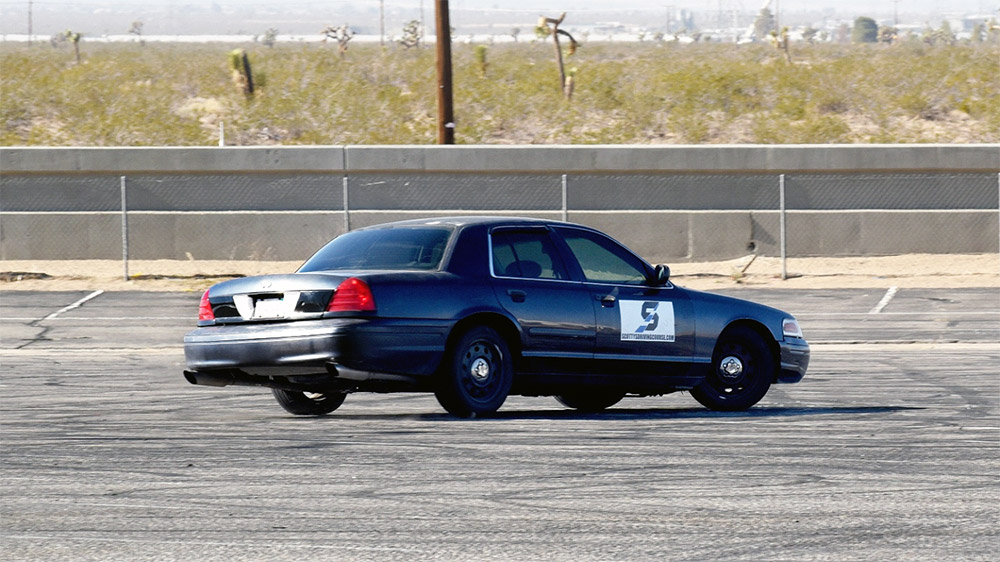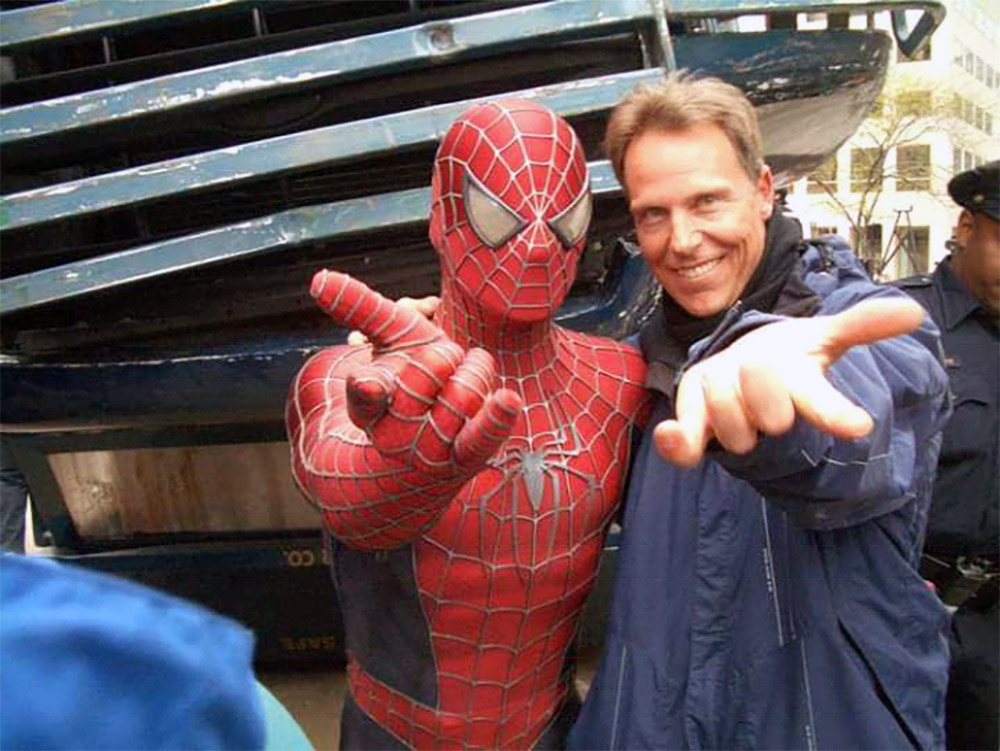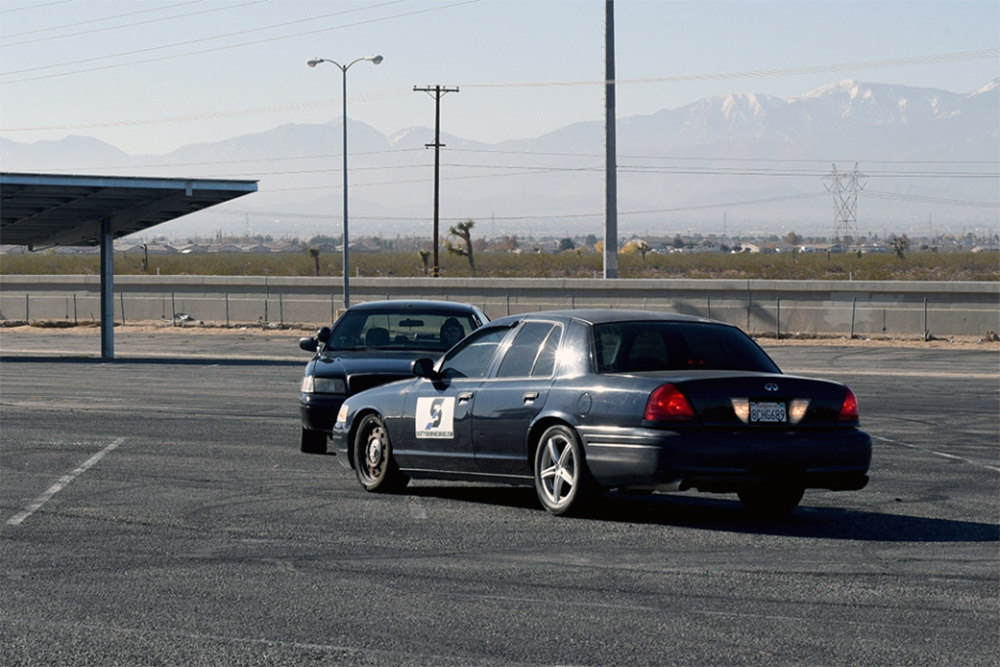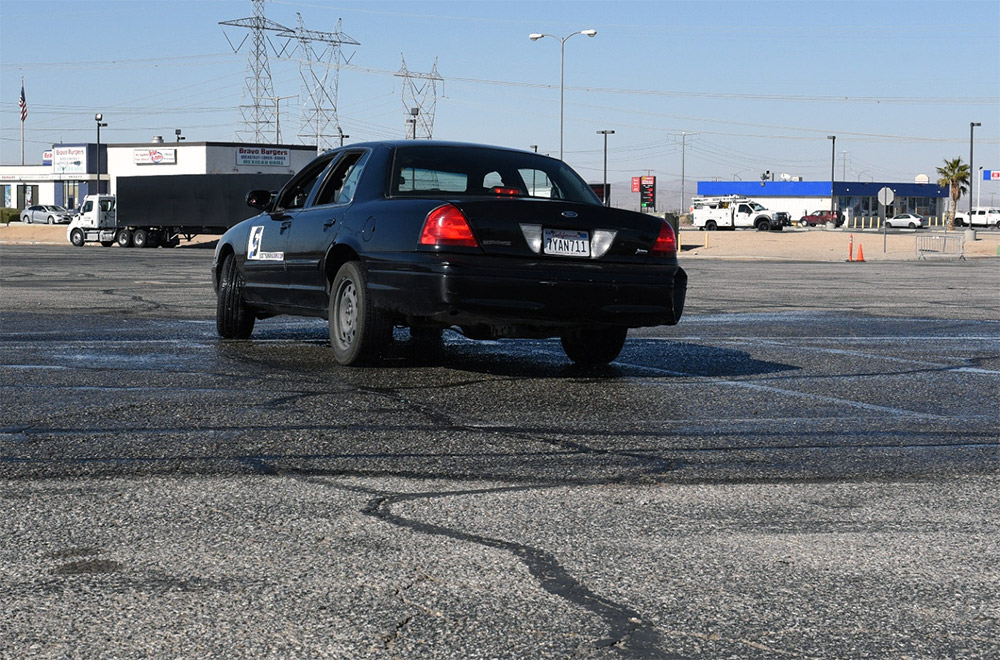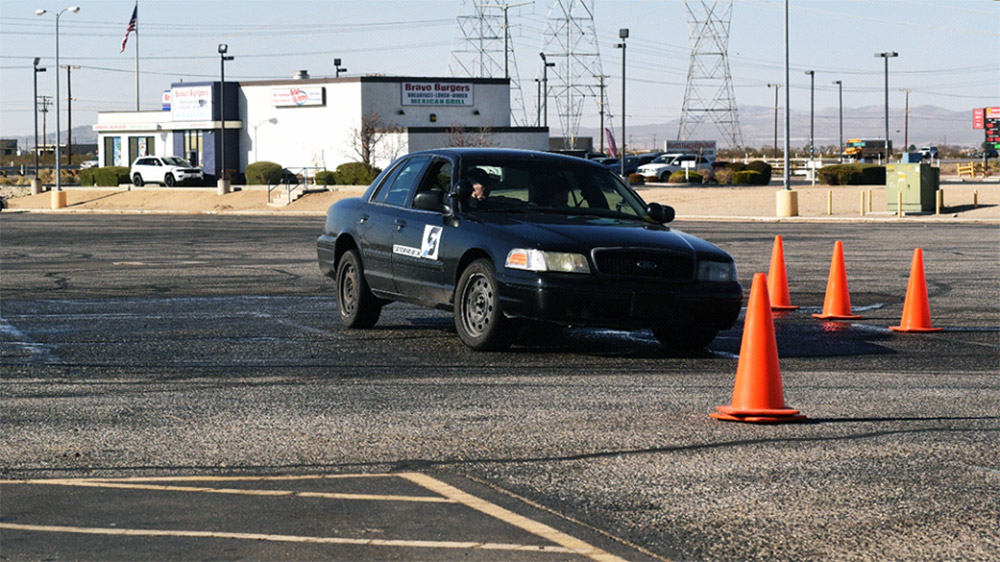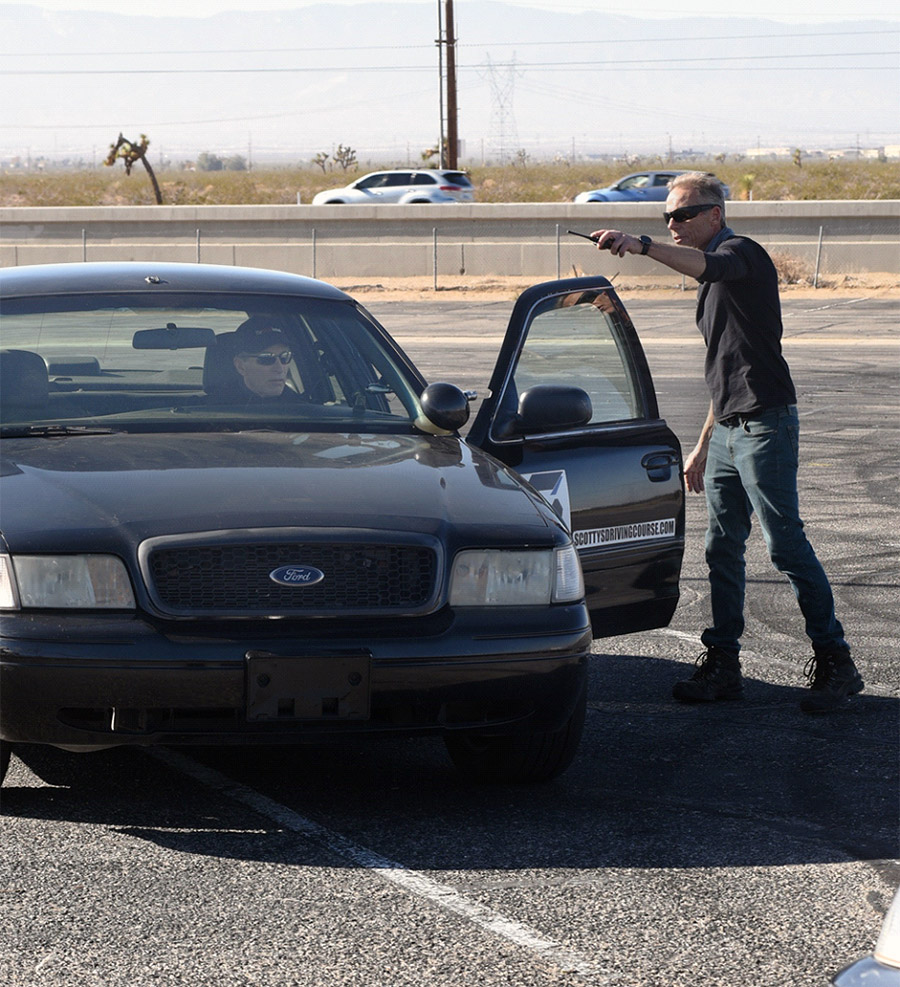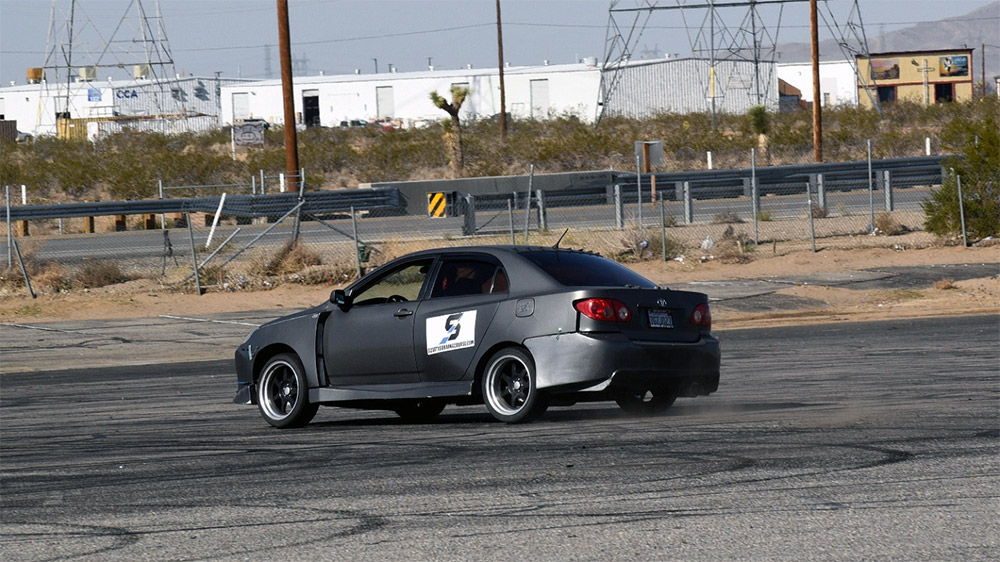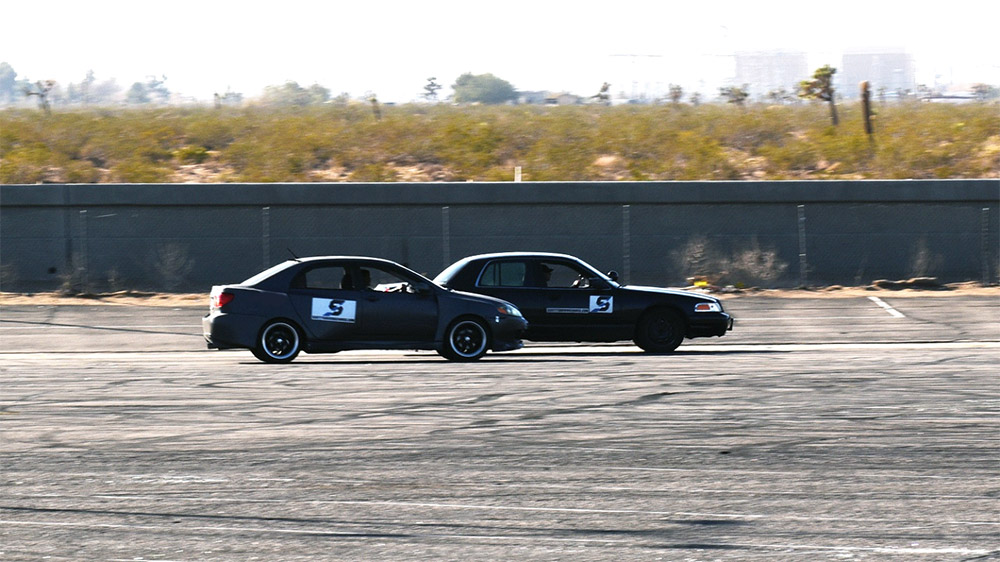Car chases on the big screen appear chaotic. The hero is chasing or being chased by bad guys. Filmmakers add variety and drama by situating chases in city centers or congested construction areas, setting up countless near misses with barriers, buildings, innocent bystanders or other cars. Close-up shots show the struggle as drivers wrestle with the steering wheel to maintain control of a car that can’t seem to turn a corner without sliding wildly.
Nothing is what it seems in Hollywood. Every turn is planned, every slide is controlled and every near miss has a margin of error. What appears as a frenzied and hectic cinematic climax is a coordinated dance of professional skill and risk management.
What does it take to be a stunt driver? Where do you learn the tricks of the trade? How do you know if you’d want to make a living in front of the camera, yet not in the spotlight? What’s it really like?
Why not ask someone who has been there, done that, and got the t-shirt? Scotty Richards not only has a lengthy resume of stunt driving and coordination, he runs a driving school to share his knowledge with others. His experience spans beyond movies and into television, commercials, music videos, live stage productions and media events. He can drive, organize others to drive or both. The ability to succeed is defined not only by mechanical driving skill, but also in effectively communicating with directors to deliver the results they envision.
The Speed Journal is all about finding compelling driving experiences around the globe and spending three days to learn how the movie magic is made qualifies as a unique experience. Speed Journal Principal Jeff Francis packed his bags and spent three days in the Southern California high desert near Victorville taking Scotty’s Stunt and Tactical Driving Course.
Francis arrived to find one other pupil, an 18-year-old trying to find out whether stunt driving was a viable career path. He loved cars and speed in the abstract since very young but was unfamiliar with the cars and had never been exposed to this type of driving before. As much as Francis learned and enjoyed his time throwing cars around open pavement dotted with pylons, it was fascinating watching a novice gradually discover his own capabilities.
Three days of driving exercises mixed with coaching, industry lingo, war stories, praise and correction, and assorted wisdom. Rather than rigidly administering a set formula, Scotty constantly adjusted his approach for the needs of his two charges.
After an introductory meet-up and briefing off-site, the group drove in a caravan to the Adelanto Event Center parking lot. The drive to the venue was itself an education session – each driver had a radio and listened to instructions for car positioning. It illustrated from the beginning that driving for a living is not just about driving skill, but also communication and coordination with others. The wide expanse of parking lot was the perfect venue for lessons delivered through several warrior Ford Crown Victorias and a lone Toyota Corolla. As the typical car of police departments and taxi services, the Crown Vic is instantly recognizable. It was also built for abuse and produced in enormous volumes which made it a natural choice for directors everywhere.
While the hero might plow through stacks of boxes and escape an exploding delivery truck in the movie, the beginnings for students are much more pedestrian. There was a yellow line in the middle of the driveway that curved along with the driveway. The students drove in reverse, looking in the side mirror, and keeping an inch off the yellow line. It was harder than it sounds. It became more challenging as the line curved and the pace picked up. Next was a slalom around cones, keeping the movement tight, accelerating and brushing the brakes in between cones. The level of difficulty increased when the slalom was done in reverse, relying only on mirrors. Rapid eye movement from mirror to mirror caught glimpses of cones disappearing from one and appearing in the other and back again. Solo runs gave way to tandem runs with cars running nose to tail through the course. Fun and challenging, but also a great illustration of the special awareness required for close quarters driving with other cars.
Scotty also encouraged awareness of run off areas in the case of a mishap and knowing the layout of a scene. Things can change quickly and a professional driver needs to be prepared, especially when they’re piloting a land missile slicing through a crowded area. Planning, planning, planning. Those toy cars and chalk outlines on the ground aren’t just for fun – they’re necessary tools to visualize placement, sequencing and who does what.
At most driving schools teaching anything other than drifting, if the tires are spinning, screeching and smoking from a car in student hands, something has gone terribly wrong. Not here. Scotty had his students mash the Crown Victoria throttle in reverse and maintain a straight line across the parking lot. Harder than it sounds, but also an opportunity to explain that directors typically don’t want to see hands on the steering wheels and wild arm movements while filming. After learning to drive on the street with “9 and 3” or “10 and 2” guidance, it took some attention to keep them at 7 and 5. Just more nuggets of wisdom about stunt driving…
Figure eights around light poles gave the students space to let their Crown Vics slide. Accelerate hard, brake hard, balance the throttle and steering wheel to pivot tightly around the pole. Higher tire pressures at the rear helped encourage the rear to move – another secret of the trade. After a few runs, Francis was not the only one having fun. His young friend enjoyed his newfound ability to drive in ways he’d only seen others do on screen. With each exercise, his confidence increased, reveling in the safety of a huge parking lot with little to hit. He began to trust his instincts and naturally work with the car.
Just when they began to get comfortable, Scotty told them to do it in reverse – using only the rear and side mirrors. Peripheral vision was mandatory. Picking up the light pole as it skipped from mirror to mirror got more difficult as speed increased. It was rewarding to stay in the throttle and trust that the light pole would reappear in a mirror after disappearing during the turn.
Scotty has over a hundred movies to his credit, including Spider Man 3, Bourne Legacy, Bird Box and three different Fast and Furious movies. He’s driven cars, motorcycles and trucks. He’s done movies, television and commercials. Over the years, he evolved to coordinating and producing, not just driving. With so much experience and being able to see the pieces fit together and what it takes to execute effectively, the opportunities keep coming. He’s currently working on a movie underdog story called “Galaxy” set in 1974, complete with period correct cars like the Ford Galaxy.
The second day started with another figure eight, but this time the two cars faced each other. The lead car drove in reverse with the other car driving forward in a nose-to-tail formation. Both positions had their own challenges. The resulting ballet had one driver watching their mirrors while the second driver stuck close, anticipating sudden moves to stay close without making contact. Maneuvering closely without crashing requires instinctively knowing what to expect from the other driver. Scotty showed how to use a hood line or mirror to maintain a sight line on a fixed spot on the other car and keep a steady pace. The skill is similar to using a sight on a gun barrel.
Hand brake turns are standard skills on a stunt driver’s resume. Any competent driver needs to be able to swing their car around in a controlled slide. Scotty wet down the pavement and sent his charges down range with instructions to pull the handbrake and yank the steering wheel to put the car into a slide. With a few tries, they learned timing and how much steering to use. First, a slide to a complete stop at a 90-degree angle. Next, a slide to a full stop at a 180-degree angle. Once they figured out the half-turn, the next challenge was to make the car spin 180 degrees and jump on the gas to power out of the slide. A few ragged attempts gave way to smoother runs. When the 18-year-old pulled a beautiful 180 and gracefully steered his Crown Vic through the spin for the first time, his confidence skyrocketed and everyone beamed with pride. It was a beautiful thing to witness.
To make things more difficult, Scotty set a line of cones to simulate a wall. He challenged his pupils to slide their Crown Vic on the wet surface 90 degrees to a full stop parallel to the cones. It wasn’t enough to just pull the brake and yank the wheel – now precision and depth perception came into play to get into the parking spot but no further.
Now that the students were armed with basic skills, Scotty threw a curveball by having them repeat many of the same exercises in the Toyota Corolla, a front wheel drive car with a manual transmission. A good stunt driver needs to be able to adapt to different equipment and driving dynamics. For the youngster, this was his first time driving a manual transmission car – what a time and place to learn!
To finish the day, the trio drove nose to tail in a huge oval around the parking lot with two car lengths between them. Each driver had a radio. At Scotty’s command, the last in line weaved between the first and second car to place itself in the lead. The leap frog drill repeated over and over, neatly bringing together the skills of spatial awareness, car control and timing.
The third day started with mechanical basics. Can you be effective if you don’t know how brakes and tires work? Scotty provided a tour of brake components. Awareness of the mechanicals not only allows the driver to better decide what inputs are needed to get specific results but also have an appreciation for the safety aspects and those who prepare the cars. If you’re in harm’s way, you want to trust your machine and have a good relationship with those who put your car together. Good for the result on the screen and good to ensure you live to drive another day.
Scotty ran the three days with professional precision. Tight, crisp radio instructions led to specific exercises. This was not free form bedlam. Just like for filming, the end result might look chaotic but the process is methodical and tightly controlled. Scotty talked about being a professional, starting even before the cameras are running. The team should arrive together, maintaining equal spacing on entry and parking. The little things show an orderly and professional approach and instils confidence in directors.
Think back to the movie or television scenes when the hero approaches a dead end or a mob blocking the road. If they can’t blast through or over the obstruction, the high-speed reverse to a 180 spin – often called a “J turn” – is the solution. The Corolla was called back in to action. The students drove backward at speed in reverse gear, pushed the clutch, moved the shifter to neutral, and cranked sharply on the steering wheel creating a pendulum effect and a 180 spin. While rolling backwards out of the spin, get the steering wheel pointed in the right direction, re-engage the clutch, shift into first, and accelerate away to safety. Like the handbrake turn, the reverse 180 is a standard tool in the stunt driver’s arsenal.
Passenger profile drills reminded the group that sometimes the job is to drive the car on camera but the job other times is to drive the camera car itself. Being able to keep a steady pace and distance between two cars while listening to radio instructions was as real as it gets without actually being on set. Running side by side around cones and light poles put a lot of the skills developed over the last few days together.
The course capstone was a full-out chase scene. The bad guy sped across a wet surface, spotted the police car, pulled the hand break to spin 180 degrees and drive away. Of course, the police car gave chase, timing his maneuver to closely approach and follow his nemesis.
For Francis, the three days learning the nuances of stunt driving helped deepen and broaden his driving skill set. There are few places where such an experience and direct knowledge can be found. For his young classmate, the school was a rite of passage. It was a lesson in his own unknown capabilities and impressive progress in a short time. It gave a glimpse into the world of stunt drivers. For someone looking ahead at career choices, the opportunity to get a candid preview was invaluable. For Scotty, it was an opportunity to share a passion. He operated more as a mentor than a disinterested teacher passing along academic knowledge. He adapted his approach to work with two very different pupils from two very different backgrounds.
The Speed Journal would like to thank Scotty Richards and Scotty’s Stunt Driving and Tactical Driving Course for the hospitality. Click here to learn more about Scotty Richards and Course offerings and follow on Instagram @scottys_drivers.



